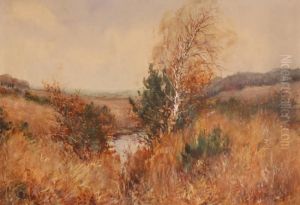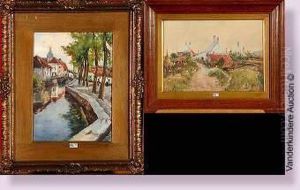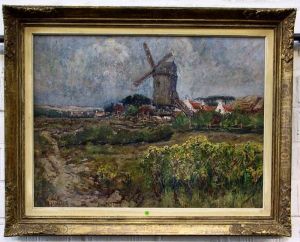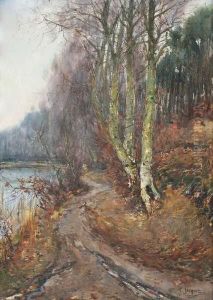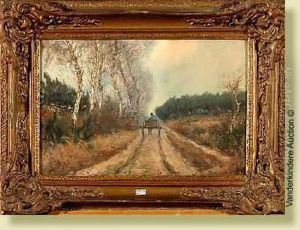Charles Celestin Jacquet Paintings
Charles Célestin Jacquet, born in 1841 and passing away in 1913, was a French artist whose contributions to the art world, though less widely known today, encapsulated the richness of 19th-century European art. Operating during a period that saw the transition from Romanticism to Impressionism and beyond, Jacquet's work, while not as prominently recognized as some of his contemporaries, offers a fascinating glimpse into the stylistic transitions and cultural preoccupations of his time.
Jacquet's artistry was nurtured in an era marked by remarkable artistic innovations and the challenging of traditional boundaries within the art world. Despite the overshadowing fame of Impressionism during his lifetime, his work retained elements of the academic and classical styles, demonstrating a dedication to the technical rigor and thematic depth characteristic of earlier 19th-century art. His oeuvre includes landscapes, portraits, and historical scenes, showcasing a versatility and depth of skill that resonated with the artistic and cultural dynamics of his era.
Training in prestigious art institutions of France, Jacquet was influenced by the artistic movements of his time but also retained a unique personal style that set his work apart. He exhibited in several salons and received recognition for his contribution to French art, contributing to the vibrant tapestry of 19th-century European culture. Despite the scarcity of extensive documentation on his life, the existing body of his work suggests a profound engagement with the aesthetic and philosophical concerns of his time.
After his death in 1913, Charles Célestin Jacquet's legacy, like those of many artists of his period, faced the inevitable ebb and flow of public and critical attention. In the contemporary era, scholars and art enthusiasts have begun to revisit the works of less widely known artists like Jacquet, recognizing their vital role in the broader narratives of art history. His paintings, now treasured in private collections and museums, continue to offer insights into the complexities and transitions of 19th-century art, serving as a testament to the enduring value of his artistic contributions.
